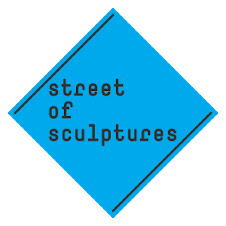"Dengbejs is about non-western modernities. It’s a 15 minute video, shot from an ironic point of view. At the opening scene of the video we witness a Dengbej ritual in a traditional Mesopotamian setup. The interior of the house is decorated in a typical South-Eastern Turkish style, a region where Kurds are the majority. The Dengbejs, who have been performing as oral historians and myth-tellers for centuries, are presenting their acts. These last representatives of a dying tradition, narrate the untold social and political legends, composed of love, rebellion and tragedies only through their voices.
After documenting the dengbej ritual, the camera travels to the exterior of the house. The video captures a mountain house where the ritual is being held. While the camera zooms out the audience realizes that this very house is not located in the heart of nature but on the top of a mirror-windowed plaza in the center of one of the biggest cities of Turkey, Diyarbakir. The video ends with a bird’s eye view of the chaotic structure of the city."
30 March 2008
News from artists 1
25 March 2008
On not speaking Sundanese/Japanese....
18 March 2008
Warming up to walk the talk
By Layana Mokoginta
This morning we had a visit of Dutch journalist Patrick Meerhoek, he is the city reporter of Amsterdam/Dutch daily 'Het Parool'. Not an art-specialist but a Bijlmer-specialist, Patrick took our invitation to have a cup-of-coffee with Nienke, Helga and myself.
We had a good talk, with Helga doing most of the talking and Patrick most of the asking. Discussing the history of the Bijlmer, the sensitivities -political and non-political- of art and the Bijlmer and the thought behind the artistic plan. Helga argued that as a person, you have multiple identities and regarding the circumstances (company you are in, environment and role) you show a part of your identity as well as others perceive an aspect of your identity from their own identity-perspective.
This is valid for the art-objects that will be exhibited in de STRAAT VAN SCULPTUREN. We talked about controverses and art, where Patrick referred to the much discussed Anton de Kom sculpture. There is one big aspect of that sculpture that fuelled the emotions around it: it's not just a sculpture. Its a monument. And a monument is a tribute to a certain event or historical figure. Thus a monument is primarily a representation of the cause it is a tribute to, not an autonomous work of art by an artist.
Patrick said that as a journalist, its important to remain an observer and not a participator.
For us it was an interesting and good discussion and the very first in-depth talk with a journalist about this project. Now we can't wait to see how he will represent this discussion in his article.
07 March 2008
No time to WASTE
The Programme Committee will convene for the artistic evaluation of the first round of sketches at the end of April. Then, a technical evaluation will take place by specialists. The advice of both teams will be placed before the Board of the Street of Sculptures Foundation, which will then make the final decision on the next phase. This will only be in May.
Chika’s proposed work of art for Open Source involves a lot of research. Taking into account her timetable for the upcoming months, she would need to start the research now. If she has to wait until May for the formal decision and commission, there won’t be enough time for the research. So what to do?
We concluded that she should start the research and use her preliminary results for one of her other projects, an exhibition at Ellen de Bruijne Projects in April 2008. So actually, you can have a sneak preview of one of the art works a year before Open Source opens in May 2009.









